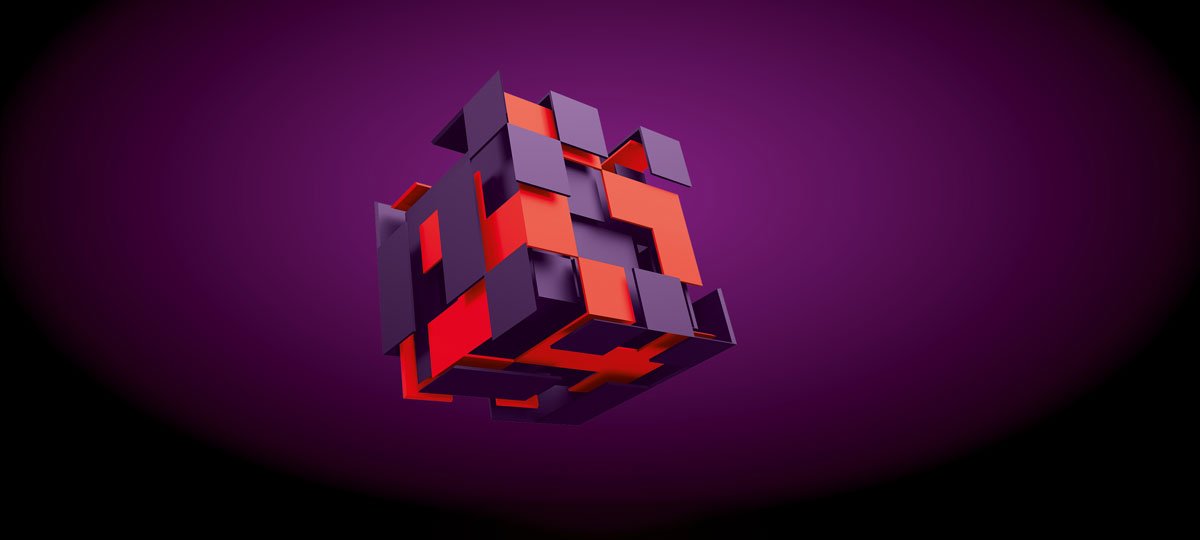From IoT to ERP


From IoT to ERP is the new mantra in services and industry. The reason is obvious: on the one hand, almost all companies have an ERP system and the vast majority have one from SAP; on the other hand, there are sensors, actuators and electronic switches in almost all technical devices. Combining these two sides of the same coin now seems to be the order of the day. GIB is a successful SAP partner from the procurement and supply chain sector and has been part of the global ifm group for several years.
This year, GIB and ifm will accomplish what the market dictates. The two companies will become one consistent provider for "from IoT to ERP". The technology company ifm is focusing on complete networking of business and production processes. On a horizontal level, ERP-controlled supply chain processes will be optimized and accelerated; on a vertical level, the store floor and business processes will be linked. The data is evaluated with on-prem or cloud-based software, visualized and fed into the ERP system with special integration software. Ultimately, "from IoT to ERP" is about efficiency and resilience.
Chief supply chain officers (CSCOs) see hybrid clouds, AI, process mining and execution management as critical tools for addressing the challenges they face due to the disruptions of the past two years, according to a new study from IBM and Celonis on supply chain resilience. Seventy-two percent of CSCOs surveyed expect to automate their processes in the next three to five years, and 69 percent plan to accelerate cloud adoption to improve real-time access to data. This is exactly where GIB and ifm come in: with sensors, public cloud and SAP software.
Supply Chain Modernization
For the study by the IBM Institute for Business Value in collaboration with Celonis and Oxford Economics, nearly 500 CSCOs from ten industries were surveyed. The results show: Companies are currently looking for ways to modernize their supply chains - and are increasingly relying on data and hybrid cloud strategies to do so (see page 42).
Modernization and automation require a holistic view of the structural and process organization. In an E-3 interview, GIB Managing Director Björn Dunkel says: "A stable procurement process requires a holistic view of the supply chain, transparency and communication between the areas instead of silo thinking. This must also be reflected in the software used. An ERP system alone cannot do this; support is needed. On a strategic level, this can be SAP Integrated Business Planning for Supply Chain, IBP. A highly complex and comprehensive tool that digitizes the supply chain process end-to-end and can show the way to the chief strategists in the company as a complex planning tool."

Supply Chain Tools
However, in order to bring the strategies to the streets, a tactical and operational tool is needed, Björn Dunkel also knows and specifies: "The tools must also be usable for supply chain and logistics managers, for planners and for schedulers. This is exactly what the GIB software covers, and it is natively integrated into SAP, so that we are already part of the SAP standard at many corporations."
But what happens in the public cloud? SAP's maxim, "keep the core clean," ensures that there can be no more integrated solutions, including the in-house SAP IBP. "Data is thus outsourced to subsystems and processed there"says GIB managing director Dunkel. "Sounds a bit like the good old days of relational databases, when this was exactly what happened for performance reasons. Back then, we complained that this approach leads to data inconsistency due to point in time shifted evaluations and thus the meaningfulness of all evaluations and recommendations for action decreases and, last but not least, the discord between the parties involved increases, since there are several truths, depending on the data actuality."
The advantages of switching to the public cloud then lie almost exclusively in IT terms: speed, maintenance, security, scalability - says Björn Dunkel: "This would mean that the driver of innovation in supply chain management would not be the business side, but IT." When it comes to moving applications to the cloud, enterprises' preferences tend to be for both minimal and major architectural changes. This is shown in the latest study by the Information Services Group on buyer behavior in the cloud. According to it, enterprises can simply move and restructure their applications to work better in a cloud architecture, rewrite them as "cloudnative" applications, or shut them down and move them to software as a service (SaaS).
E2E procurement and logistics
A comprehensive end-to-end process in procurement and logistics is managed across many areas. What will be the optimal architecture for this? On-prem, hybrid or even public cloud? "We are open to all architectures and can already offer supply chain solutions for any ERP variant. Not fully everywhere, but we are working on covering more and more application areas and improving our customers' processes more and more, whether in the private cloud or in the public cloud, as a hybrid or on-prem," explains Björn Dunkel in an interview with E-3 Editor-in-Chief Peter Färbinger.
On-prem versus cloud
"In the end, it is the application area that dictates the architecture we need for it"GIB Managing Director Dunkel describes the situation, see also page 42. "Let's take supplier connectivity as an example. Here we are forced to leave our safe oasis of the on-prem world because we need to make ERP data accessible and, of course, we also want to receive data. Here, without question, a cloud solution presents itself. If I remain with the data in my ERP environment, I would still prefer an on-prem solution today. Now, of course, you're wondering why we don't create a cloud solution that can be docked to both on-prem systems and cloud ERP systems. That would indeed be a first-class thing. Unfortunately, however, there are still too many question marks in the Business Technology Platform, BTP, from SAP, which we want and need to use as a basis for development. For example, the billing system is not clearly defined, the technical basis is not really transparent, and even the programming language to be used is still up for discussion."
So how can this challenge be located? "The topic of supply chain and logistics, with the sub-area of procurement, has always been an autonomous area in the ERP world in my eyes"defines Björn Dunkel. The relevance of this sector in SAP's eyes is shown by the fact that the ERP world market leader has already dedicated a separate chapter to this topic in the past: SAP APO. "Unfortunately, APO was not a real success story. Why? Because SMEs unfortunately attached little relevance to the topic. Supply chain management was basically not integrated into everyday business at all"GIB Managing Director Dunkel knows from his professional experience. In many places, supply chain management was limited to scheduling, in which structured planning was then also replaced by diligence, commitment and gut feeling. However, current events are causing SMEs to rethink their priorities and the topic of supply chain management with all its sub-processes is suddenly becoming a top priority, see also page 46 of this E-3 cover story.
More agile, more efficient, VUCA
"The confluence of post-covid challenges, inflation and supply issues, changing security requirements, and the demand for greater sustainability has created a complex business environment. This is forcing companies to rethink and redesign their supply chains to become more agile, efficient and sustainable", said Jonathan Wright, Managing Partner Finance and Supply Chain Transformation, IBM Consulting. "Technology and data-driven automation and artificial intelligence are key to not only identifying inefficiencies in current workflows, but also identifying new opportunities." Volatility, Uncertainty, Complexity and Ambiguity - in other words, VUCA, which stands for volatility, uncertainty, complexity and ambiguity. This describes characteristics of the modern world that summarize the difficult framework conditions of corporate management.
"The impact of VUCA on the supply chain means a different kind of supply chain management is needed"Björn Dunkel explains. "The key here is to let tactics and execution learn from each other. The ever-changing reality has to be poured into tactical planning - and preferably in real time. Complexity needs to be under the hood." Thus, the user needs an intelligent system that uses the CLUI principle (Context-based, Location-based, User-based Information) to guide each supply chain manager to do the right thing at the right time. "And that is exactly what ifm's Purpose is and will be".says Björn Dunkel, who is pleased about the last step of the merger of GIB and ifm. "With Supply Chain Excellence, we offer our customers a two-in-one solution: the SCM planning tool for managers and the tool for simplifying the day-to-day operations of employees."
Supply Chain Excellence
GIB comes from the procurement sector and for some time now has also been involved in supply chain management, more precisely supply chain excellence, now GIB will be merged into the company ifm: What does this mean for GIB itself and for existing customers as well as the SAP community? "With ifm and GIB, two very innovative know-how carriers have found each other in their sub-discipline - ifm for the area of operational technology and GIB for the area of information technology. We therefore combine or marry the OT level with the IT level and thus create vertical digitization in addition to the horizontally digitized supply chain. It is therefore a win-win business for everyone, especially for our customers and, of course, for those who want to become one.says Björn Dunkel, see also the commentary on page 49 by E-3 Editor-in-Chief Peter M. Färbinger.
Can volatility, uncertainty, complexity and ambiguity be solved by one vendor for one user alone and will we see heterogeneous working communities in the future? "A clear no", comes in the E-3 conversation from Björn Dunkel. "Here, it is always important to keep the big picture in mind. Holistic SCM consists of four pillars: Demand Planning, Manufacturing, Procurement and Inventory Management. If these processes are not viewed as silos, but as part of SCM, and the Supply Chain
manager aligns the sub-processes like cogs in clockwork, the result is a resilient supply chain."
Put simply, GIB was a very successful add-on supplier for SAP R/3 and Business Suite 7. Björn Dunkel: "To better paint the picture of the role of GIB and Supply Chain Excellence, SCX, I would say from add-on to value add-in. Unlike most other SCM solution providers, including SAP itself, SCX runs in the digital core of S/4 Hana. That's exactly what we're taking advantage of. We access the SAP core directly. Here in the digital core are hidden the data treasures of every customer system, here we find all past and current master and transaction data." The aforementioned IBM study found that chief supply chain officers can take concrete steps to develop and operate data-driven and sustainable supply chains. Nearly nine in ten of the CSCOs surveyed are implementing execution management and 77 percent are implementing process and task mining to optimize their operations.
By 2025, 83 percent of CSCOs plan to implement AI-powered, real-time inventory management, and 74 percent say hybrid cloud integration is critical to digitally transforming their supply chains. Björn Dunkel confirms these survey results: "Based on this data, the complex supply chain is analyzed realistically at sub-process level with the help of system-internal intelligence. Based on this, we offer users a transparent picture of their sub-process quality and show how the sub-processes perform in the complete end-to-end process. We then incorporate our extensive process know-how, which we have gained from decades of consulting, countless projects and coaching in a wide range of industries. Based on this, we derive concrete recommendations for action that, with constant implementation and optimization, will lead to the excellent supply chain process."
Opportunities and change
Eliminating inefficiencies in core supply chain processes represents a tremendous opportunity. Chief supply chain officers know they need to make these adjustments, and in many cases they are already doing so. But they often don't have the insight into the data and systems they need to understand where changes need to be made - and they lack the tools to drive that change. "In this way, we contribute to helping our customers achieve a resilient supply chain, despite VUCA. In this way, we make successful companies even more successful. So it's really quite simple".is how Björn Dunkel describes his work in the SAP community.
This raises the question of whether the complexity of procurement and logistics can still be managed using traditional IT means or whether users will need a digital twin for their supply chain in the future. GIB Managing Director Dunkel says: "Basically, the ERP world is already an attempt to create a digital image of reality. This digital image is then used to forecast, plan and control reality with all the variables, influences and all the knowledge of the past. But in order for this to be truly successful, it is additionally necessary to match the data in 'near real time'. This is not possible with paper, pencil and gut feeling."
Track, Trace and Quality
It's the same in Procurement: Is the part or material available or not? If so, where is it? Where should it be? Where is it going? It's about locating, tracking and quality assurance, it's about track, trace and quality. That's linking the physical world into the ERP system, linking OT and IT. And what about the use of machine learning and AI in procurement and logistics in general? "In Supply Chain Excellence, we have already integrated machine learning and artificial intelligence as of today. We calculate a safety stock on the basis of neural networks or determine the best-fit forecast procedure. But that's not enough for us. We are currently working on a machine learning solution for planning optimized detailed production planning. A first version is already being delivered in Release 23. For the Big Picture SCX, we have anchored ML and AI as an integral part. We use artificial intelligence and machine learning as decision support for a wide variety of operational topics around procurement, logistics and of course supply chain excellence as an end-to-end solution."
Another trend in the SAP community besides ML and AI is the discourse about a future cloud model, see page 46. According to a recent survey by the user association DSAG, the public cloud is not yet very widespread. What risk are you taking with this concept? And why? "I can definitely confirm that", comments Björn Dunkle. "The public cloud is still a real exotic. And two years ago, we would never have dreamed that today we have a customer who has opted for precisely this path - including us, of course. There are indeed clear arguments in favor of the public cloud, for example the issue of data security, maintenance, system up-to-dateness and, of course, the painful return to the standard, i.e. away from sprawling Z-rooms and special locks. Moving away from on-prem can also be a means of expanding one's market lead."
Public Cloud and SCM
Gigaset, a German manufacturer of communications products and solutions, decided to move to the public cloud to migrate to S/4. It was important to the company that certain functions from the external solution for improving logistical processes in SAP could also be used in the public cloud. In close cooperation with the trusted solution provider GIB - in future ifm - which has many years of experience in the supply chain sector, the functions are now being transferred to the cloud. "The switch to apps used in the public cloud is cutting-edge in design and usability, stylish and usable from any mobile device", Björn Dunkel describes the current situation. Fiori optics has really set milestones here.
For management considerations and strategic evaluations, and for finding fundamental structural problems in the process, this is a clear and intuitively operable solution. But how the dispatcher gets his cockpit, with which he controls all materials from one application, onto his screen is a question not only asked by GIB Managing Director Dunkel: "That's where the Launchpad quickly becomes an ant cinema. We took on this challenge and, true to the Fiori premise of 'three clicks to the finish line,' developed an application that takes advantage of the new world, but carries the expressiveness of the old world with it. This has encouraged our pilot customer to continue on the path to the public cloud. And we realized that we could combine the best of both worlds, creating a way to leverage our proven
Suite gradually into the public cloud."
Björn Dunkel concludes the discussion: "Our solutions are so popular because we are good at creating transparency. For the day-to-day business of dispatching, we have developed cockpits that display all the relevant information a dispatcher needs on one screen. No tedious transaction hopping. No twenty clicks to see if action is needed, and another ten clicks to unravel the mystery of what to do."
Challenges for Chief Supply Chain Officers
The IBM Institute for Business Value, in partnership with Celonis and Oxford Economics, surveyed 500 chief supply chain officers (CSCOs) from a variety of industries. The goal of the survey was to gain a comprehensive understanding of how recent disruptions in global supply chains are impacting their short-term tactics, longer-term strategies and performance. CSCOs from ten industries were surveyed: Financials, Consumer Products, Healthcare, Electronics, Telecommunications, Insurance, Industrial Products, Manufacturing, Automotive, and Life Sciences, each representing five to fifteen percent of the total sample.
- Eighty percent of CSCOs surveyed in the study said demand volatility was one of the biggest challenges, while 77 percent cited the increased cost of transportation and logistics.
- 76 percent rated bottlenecks in transportation and logistics as the biggest challenge.
- 71 percent said that lower inventories of raw materials and goods had led to supply bottlenecks and lost sales.
- 60 percent had to expedite product deliveries for customers, resulting in higher transportation costs.








